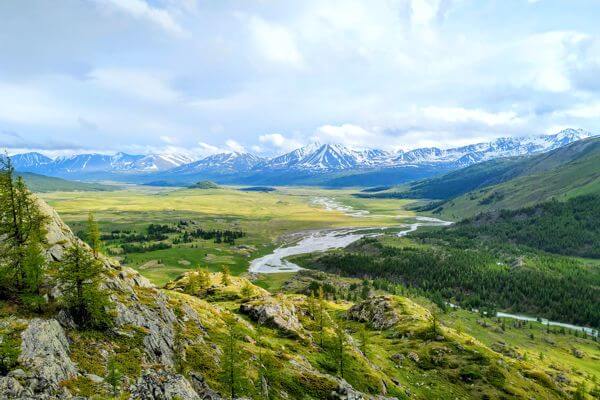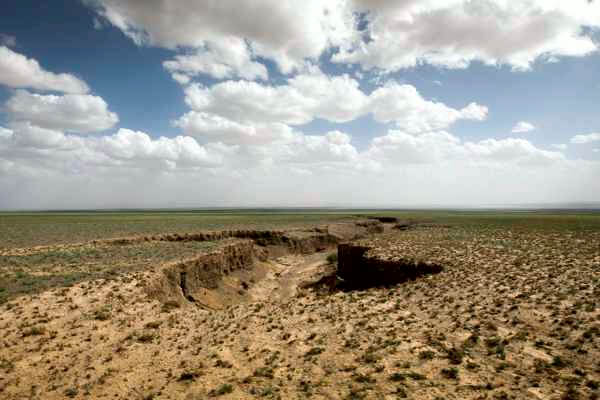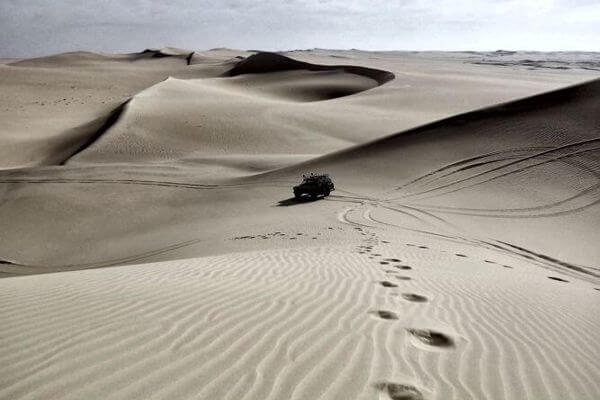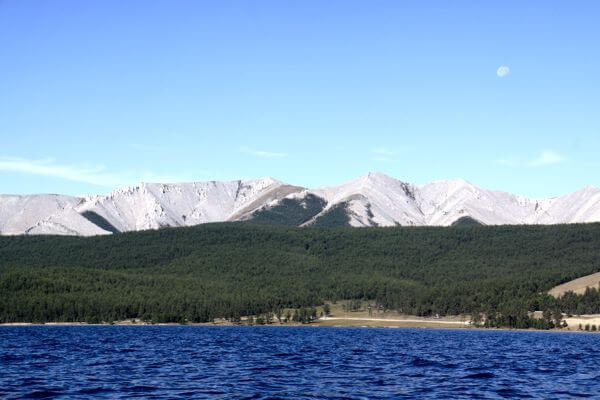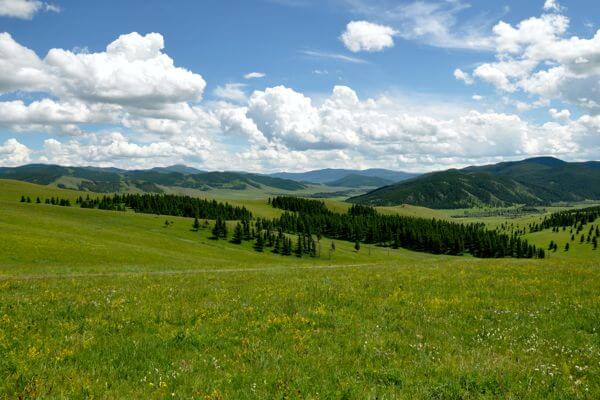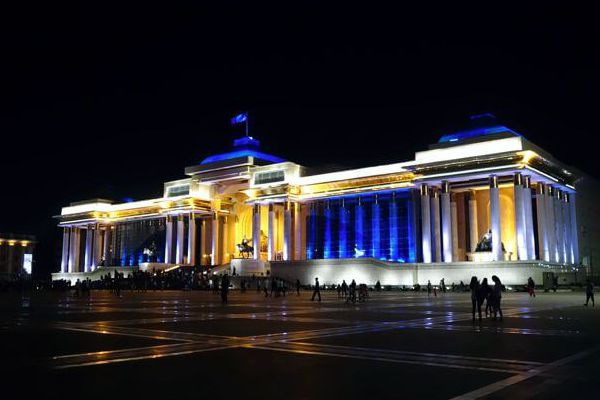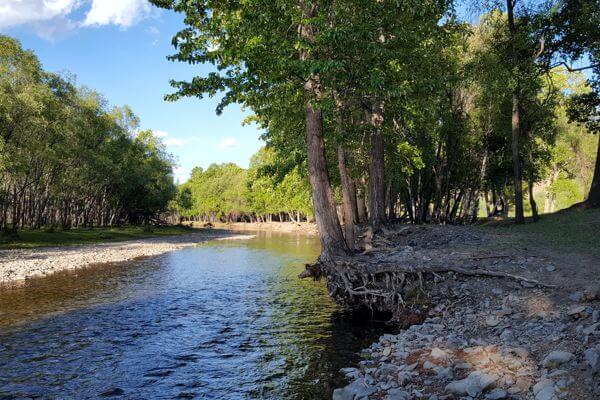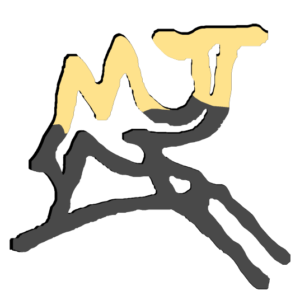The Big Loop of Mongolia
(18 days)
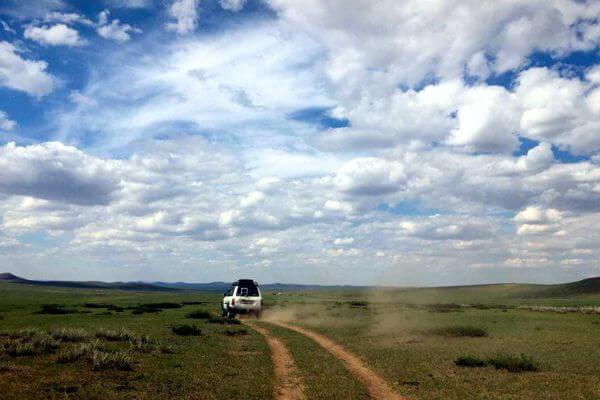
short description
Detailed description

Baga Gazriin Chuluu
After breakfast in our hotel restaurant, we will leave for the Mongolian countryside. Our first stop will be 250 km southward in the beautiful region of Baga Gazriin Chuluu. It is a huge granite formation in the middle of the Mongolian sandy plane.
On open plain we will visit the remains of a small monastery named Delgeriin Chior Monastery. You will be entering first time in Ger, huge impressive 12 walls Ger richly decorated and carved used by monks to chant during colder season when the stone monastery gets too cold to be inside.
End of the afternoon we will drive and hike around in the area. We will visit the picturesque ruins of a small monastery that are hidden in a nice little protected valley and wander between huge endless piled granite rocky hills as if they were put. There is a little spring in the rocks of Baga Gazriin Chuluu.
(Ger camp L, D)
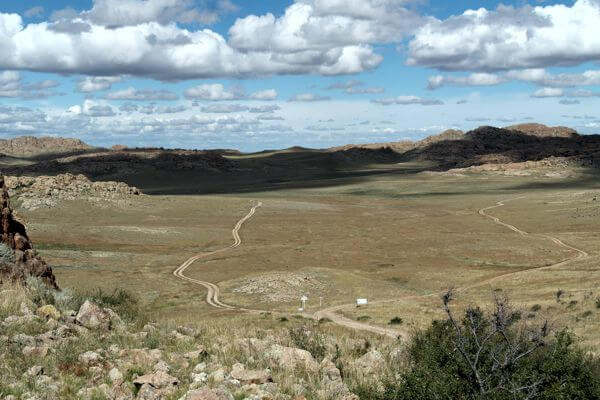

Sum Khukh Burd & Tsagaan Suvarga
After breakfast, we will start driving towards the Gobi Desert. Today we will see the landscape changing dramatically from the fertile grassland to the inhospitable rocky land. The number of families and cattle we will see along the road will gradually reduce. Camels will slowly replace cows. During this nearly 250 km trip (5 hours driving) we will stop at some interesting spots. The first place we will visit is Sum Khukh Burd Monastery Ruin surrounded by tiny lake once used to be home to some remarkable bird life. Among others, the Mongolian lark, various species of prey birds, geese and swans come to this spring-fed lake. The ruins of Khukh Burd Monastery that was flattened during the Mongolian purge period. (1928 – 1939) From here we will head for Tsagaan Suvarga.
In the evening after long hours of driving we will reach Tsagaan Suvraga. The Cliff is 30 meters high and 100 meters wide. Over thousands of years the wind has created his amazing structure.
From a distance Tsagaan Suvraga resembles the ruins of an ancient town with crumbling buildings. Painted and carved on the rocks are ancient images of people hunting ibex with long bows and petroglyphs depicting wild animals and cattle. There are also Turkic inscriptions with different seals and images in the caves here.
A fissure running east to west from the upper slopes of a mountain down across the steppe. Looking into the fissure you will see high mud columns rising from the depths below. The yawning gap looks like the open jaws of some fabulous animal. Some of the caves are multi chambered one of which stretches back over 70 metres.
(Ger camp B, L, D)
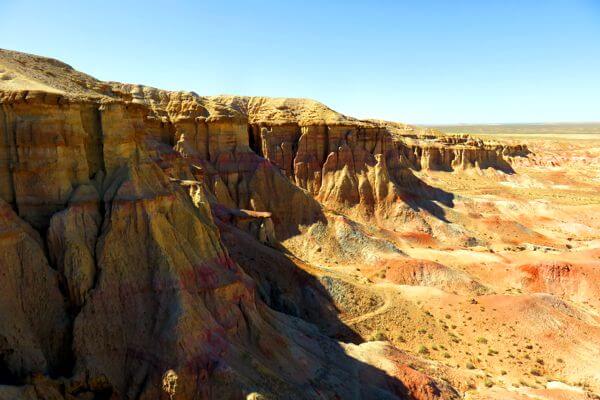
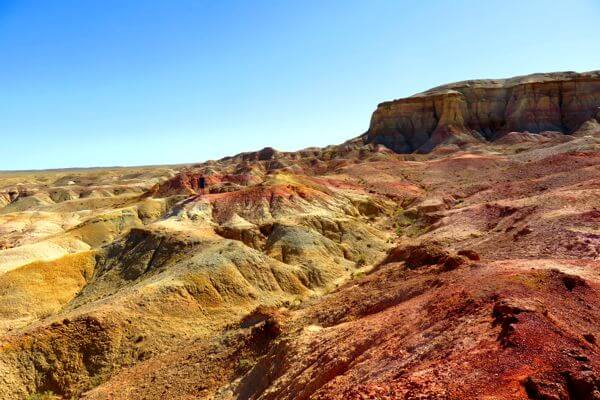

Yolyn and Dungenee Am
The Gobi Desert measures over 1,610 km from southwest to northeast and 800 km from north to south and stretches over Mongolia and China. It occupies an arc of land 1,295,000 km2 in area, making it fifth largest in the world and Asia’s largest. Much of the Gobi is not sandy but is covered with bare rock.
The Gobi is a cold desert, with frost snow on its dunes during the winter months. Besides being quite far north, it is also located on a plateau roughly 910–1,520 meters above sea level, which further contributes to its low temperatures. An average of approximately 194 millimetres of rain falls per year in the Gobi. Additional moisture reaches parts of the Gobi in winter as snow is blown by the wind from the Siberian Steppes. These winds cause the Gobi to reach extremes of temperature ranging from –40°C in winter to +50°C in summer. Today we will take a ride through the beautiful gorges of the imposing Altai Mountain Chain. After arriving in Dalanzadgad we will pass through the Yolyn & Dungenee Am both located in the Gobi Gurvansaikhan National Park. Ancient rivers carved those green valleys.
We may catch a glimpse of the wild Argali sheep, the Ibex, the desert gazelles or the Golden Eagles. We will also pay a visit to the little museum of the park where you can admire a collection of dinosaur bones and local flora and fauna.
(Ger camp B, L, D)
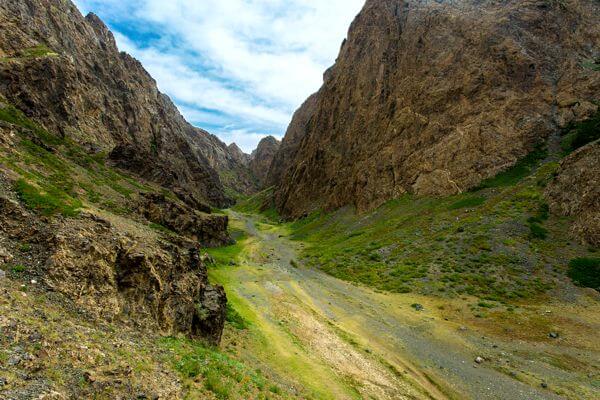
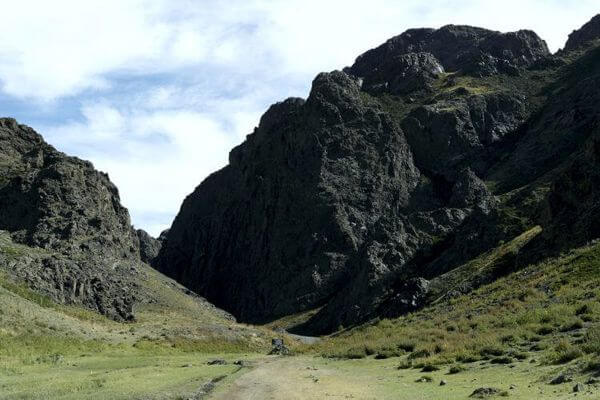

Khongoryn Els
After a good morning breakfast, we will drive 150 km westwards to the Khongoryn Els. These are Mongolia’s largest sand dunes. Those impressive dunes of 275 meters high in some places, stretch from East to West over more than 100 km. Behind the sand dunes we will see the impressive black rocky mass of the Sevrey Mountain. Those who are courageous will climb to highest dune equivalent of 40 store building. Once you reach the top of the dune, your effort will be rewarded. The whole environment looks full of mysteries, and you get amazed how possibly the landscape can be like that. After dune excursion will visit camel breeding family. It is our tradition to offer food and drinks without asking the visitors.
(Ger camp B, L, D)
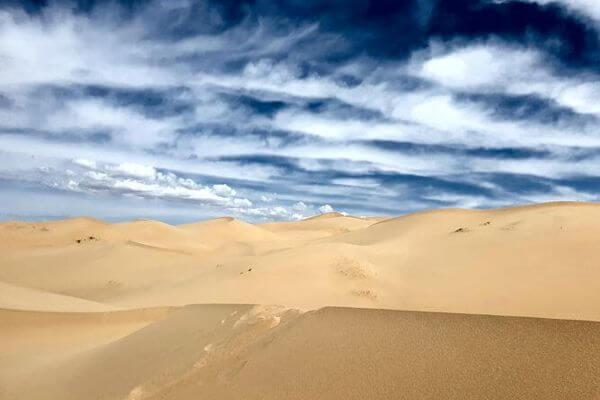

Bayanzag or Flaming Cliff
Today our drive will take us to Bayanzag also known as the “Flaming Cliffs” is the worldwide renowned place where palaeontologist Roy Chapman Andrews found dinosaur bones and eggs. The surrounding landscape is a beautiful combination of rocks, red sand and scrubs. Here we will spend some time exploring the cliffs.
(Ger camp B, L, D)
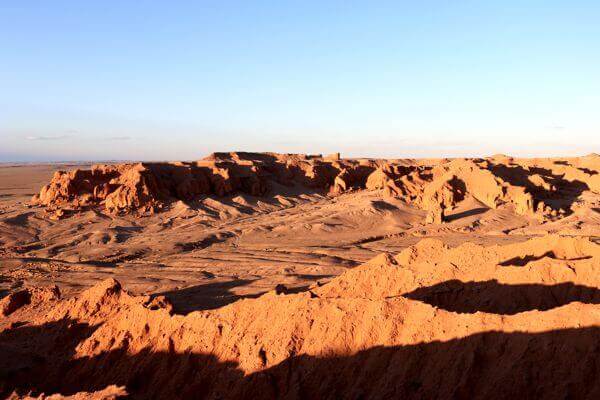

Ongiin & Khoshuu monastery
Today we will continue driving to northwest to Ongiin Monastery. We will enjoy the peace and beauty of the Delger Khangai Mountains. We will explore the ruins of Hoshuu Monastery on one side of the river and the ruins of Ongiin Monastery on the other side of the river. We will hike around in this massive series of rocky hills cut by the river.
The monasteries were built in the 17th century and destroyed in 1937. They were among the largest temples in Mongolia and housed over 1000 monks.
Now day between ruins little monastery was built and in Ger museum are exhibited interesting and rare remains of old monasteries.
(Ger camp B, L, D)
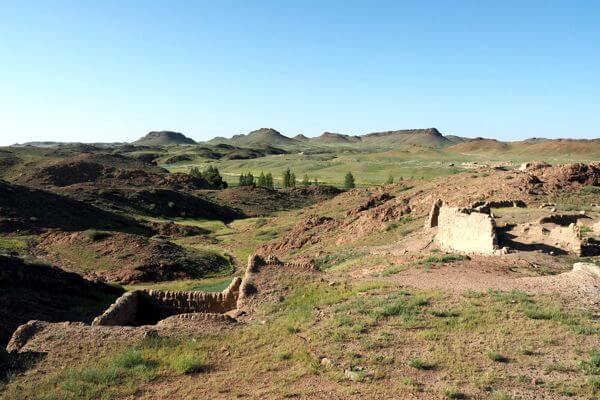

Karakorum
After an early wake up, we will set off for a driving day to Karakorum (also called Kharhorin).
Karakorum is the site of the 13th century capital of the Mongolian Empire created by Genghis Khan. The founding of Karakorum started on the ruins of Turug and Uigur cities in the Orkhon valley at the eastern end of the Khangai Mountains in 1220 by the Genghis Khan’s order. It was completed 15 years later during the Ugedei Khan’s reign. The town was a very cosmopolitan and religiously tolerant place.
The silver tree, part of Möngke Khan’s palace has become the symbol of Karakorum.
The highest peak of its prosperity was from 1220 to 1260. The specific feature of this stage is that Karakorum existed as the great capital of the Euro-Asian Empire with Mongolia as its core and as the centre of politics, economy, culture, religion, intellect, and diplomacy and the prominent tie of international relations.
Between 1260 and 1380 Karakorum lost the status of the Great Mongolian Empire and became the capital of Mongolia. When Khublai Khan claimed the throne of the Mongol Empire in 1260, as did his younger brother, Ariq Boke, he relocated his capital to today’s Beijing. Karakorum was reduced to the administrative centre of a provincial backwater of the Yuan Dynasty.
In 1368, the rule of Mongolian Yuan Dynasty collapsed and the centre of Mongolian government was shifted to its homeland after 110 years since Kublai Khan moved the Empire capital to China in 1260. It gave Karakorum a chance to prosper again.
In 1388, Ming troops under General Xu Da took and destroyed the town.
Today nothing is left from this legendary city.
In 1580, when Abtai Sain Khan together with his brother, lord Tumenkhen, visited the 3rd Dalai Lama and expressed their wish to build a temple in Mongolia, he advised them to reconstruct one old temple in Karakorum. The temple in Takhai ruins that was restored in 1588 according to the Dalai Lama’s recommendation is the Main Zuu temple of Erdene Zuu monastery.
Now Erdene Zuu Monastery is all that remains of what once was a huge monastery of 100 temples and about 1.000 lamas residing there. We will explore the grounds of Erdene Zuu Monastery surrounded by its massive 400 m X 400 m walls. We will be guided around the 3 remaining temples: Dalai Lama, Zuu of Buddha and Lavrin Temple.
Another place we will visit will be Karakorum Archaeological Museum. It is a small museum but housed in a modern well-run building with good lighting and display cases with clear English labels. The exhibits include dozens of artefacts dating from the 13th and 14th centuries which were recovered from the immediate area, plus others that were found from archaeological sites in other parts of the provinces, including prehistoric stone tools. You’ll see pottery, bronzes, coins, religious statues and stone inscriptions. There’s also a half-excavated kiln sunk into the museum floor. Perhaps most interesting is the scale model of ancient Karakorum, which aims to represent the city as it may have looked in the 1250s, and is based on descriptions written by the French missionary William of Rubruck. Another chamber exhibits a most recent addition, a Turkic noble tomb with wall paintings and artefacts, including gold items and jewellery. There is a short video of actual burial site.
We will also see the Turtle Rock and the Phallic Rock, visit little market behind walls exposing local arts by locals.
(Ger camp B, L, D)
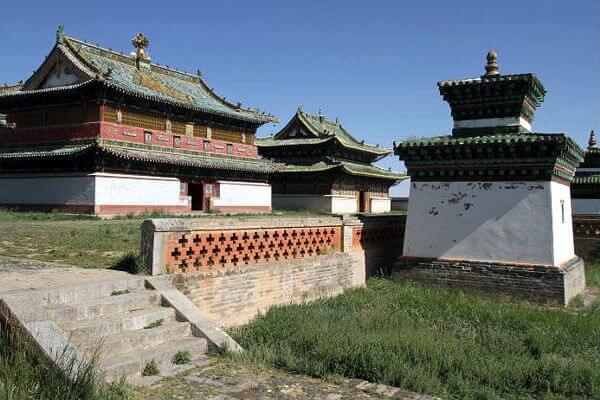
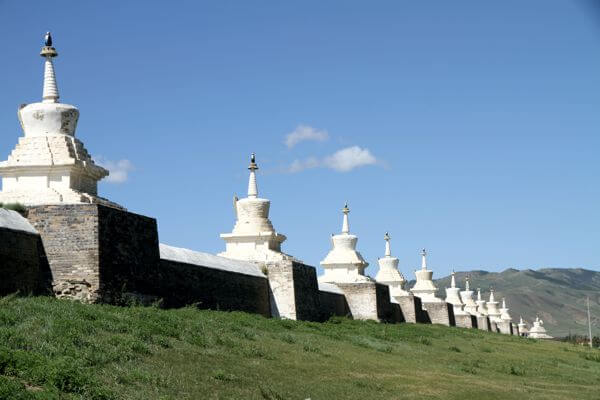
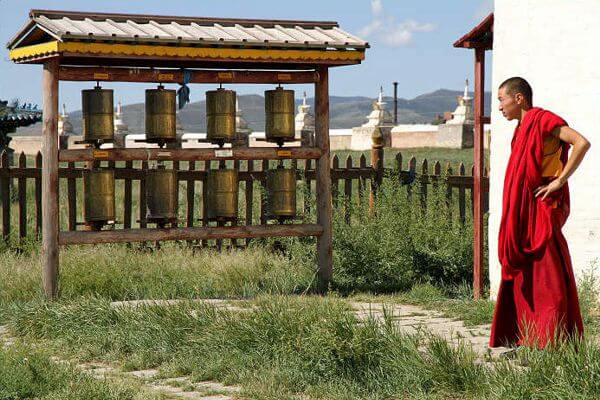
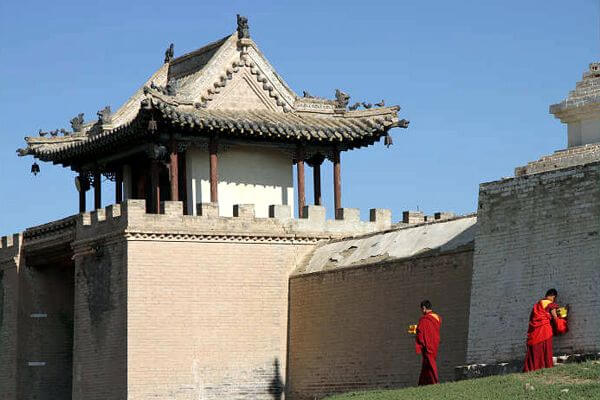
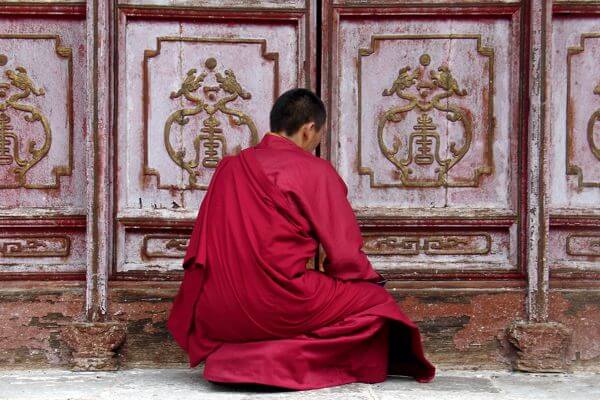

Orkhon valley & waterfall
In the Quaternary era a volcano erupted near the beginning of the Tsagaan Azarga or White Stallion River and the lava flowed down the Orkhon valley forming the 10-meter-thick layer of basaltic rocks. The basaltic layer was crosscut by the Orkhon River continuously and the canyon was formed as a result. The valley is registered as world cultural heritage by UNESCO due to its ancient findings, artefacts related to early 6th century and even before that. As well as, 12th to 13th century great Mongol empire had expanded its capital Karakorum here. Moreover, pasture nomadic lifestyle still remains here and it keeps both historic and nomadic view of life.
At the beginning of this canyon lays the 20 meters high, 10-meter-wide waterfall. The most adventures of you will climb down the canyon and swim the lake located at the foot of the waterfall. We will visit horse & yak breeding family. Get involved at family daily activities: milk horse& yak, make dairy products such as cheese, butter etc… see how famous horse milk drink is proceeded.
(Ger camp B, L, D)
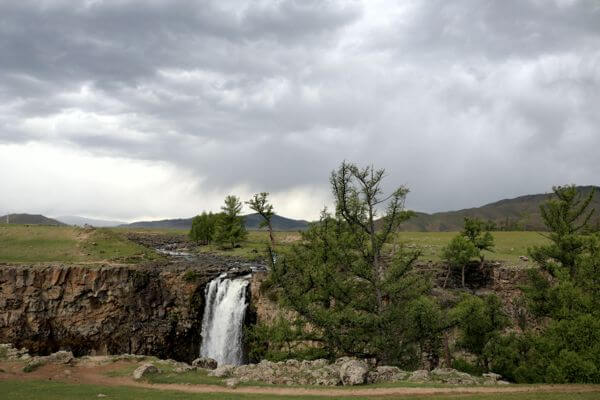

Tovkhon monastery and Tsenher Hot Spring
The first stop is Tovkhon Monastery, established during the 1650’s by Zanabazar, one of Mongolia’s most respected religious leaders. The monastery’s wooden buildings are integrated with a natural system of caves perched near a hilltop, from which you have beautiful views of the Orkhon Valley and the surrounding pine forests. On the top of the cliff, a pile of stones to worship a god of this mountain forms a hill. It is called Ovoo.
After visiting the monastery, we will be driving westward in the direction of Khangai Mountains. On average, the Khangai Mountains are 2500-3000 M above sea level and are composed of mainly granite, intrusive chert and sandstone belonging to Palaeozoic era. The Khangai Mountains is about 800 km long, ranging from Zavkhan province territory to Tuv province. They function as the continental divide of the world water system.
The green mountainsides and the network of smaller and larger rivers offer excellent pastureland for the herds of horses, yaks and cows.
In the afternoon we will reach Tsenkher hot spring. This resort has a large open-air pool at its customer’s disposal. The hot water of the pool flows continuously in from the hot water spring. At the spring, the temperature of the water is over 80 ° C. A complex pipelines system regulates the water temperature. Some will spend hours sitting in the pool talking to their friends while staring at the stars or scanning the nightly nature around them.
(Ger camp B, L, D)
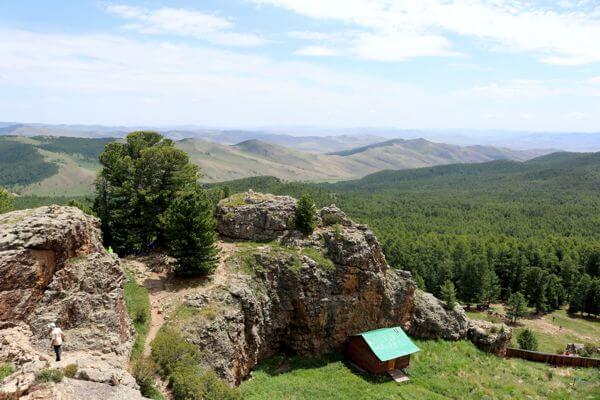
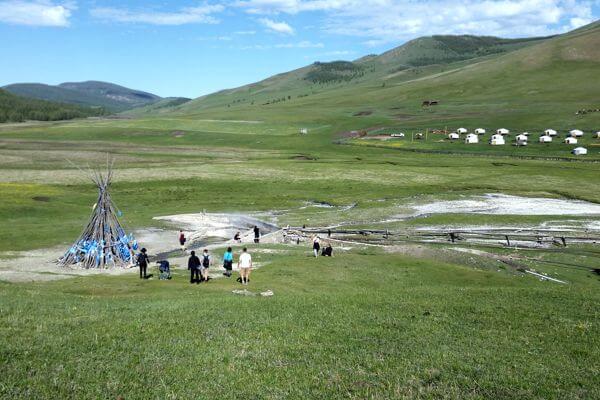

Terkhiin Tsagaan Nuur and Khorgo volcano
A little before lunchtime we will reach Tsetserleg, capital city of Arkhangai province. It is a lovely little town surrounded by forested hills. Here we will visit the Buyandelgeruulekh Monastery, the town main functioning monastery and the nice little Museum of Arkhangai located in Zayaiin Gegeenii Monastery. From the museum we will walk hill upward to a small abandoned monastery and enjoy the beautiful view we have from there over Tsetserleg and the surrounding hills.
We will eat lunch in a local restaurant. In the evening we will reach Terkhiin Tsagaan Lake. It is one of the most beautiful lakes of the country. The lake is surrounded by extinct and craterous volcanoes, and was formed by lava flows from a volcanic eruption many millennia ago. As a result of the volcano eruptions the landscape is covered with black volcanic rocks.
(Ger camp B, L, D)
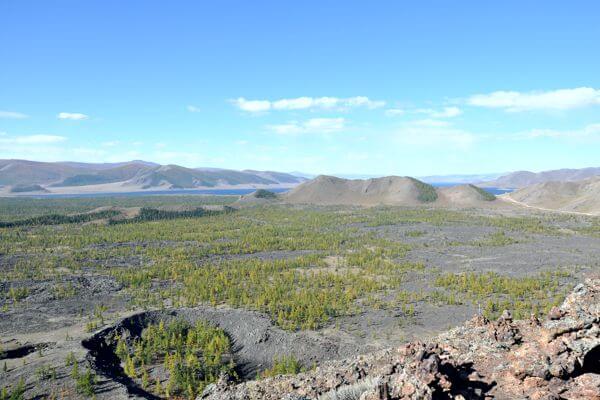

Terkhiin Tsagaan Nuur and Khorgo volcano
Today we will relax around the White Lake (also named the Terkhiin Tsagaan Nuur). We will make an excursion to the top of Khorgo Uul Volcano and we will pass the gorges that lead from Tariat to the volcano. The volcano crater is 200 m wide and 100 m deep and is covered with trees at the back and around the opening of the crater. To the south of Khorgo there are numerous basaltic “gers” formed during the cooling of lava; some of the gers have gates and upper holes and reach 1.7 m high.
(Ger camp B, L, D)
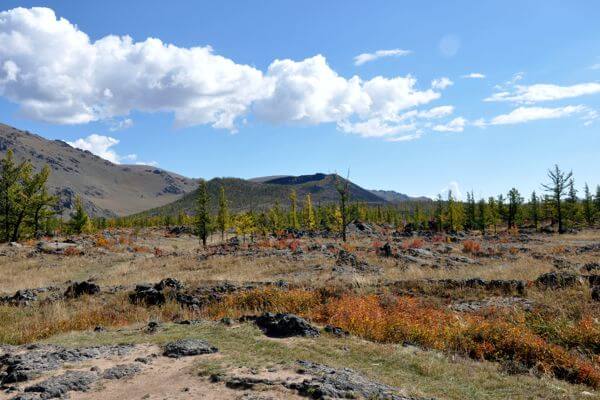

Zuun Nuur
We will drive for 2 consecutive days’ northwards to reach Khovsgol Lake. We will drive through the central grasslands where you will see large herds of horses, cows and yaks. You will cross several rivers, smaller and larger ones, all full of fish. Tonight we will reach Dzuun a small lost lake in the middle of the Mongolian steppes. You’ll have a chance to observe several water birds on the lake.
(Tented camp B, L, D)
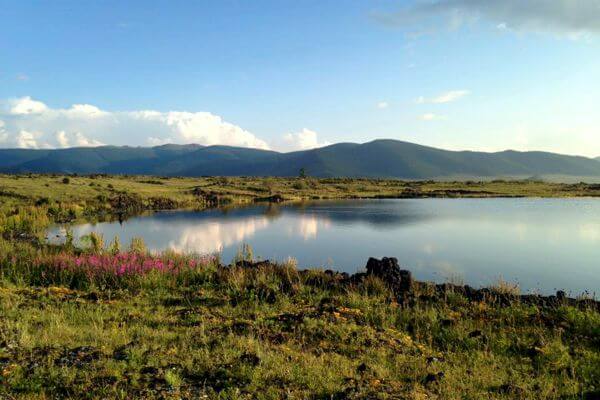

Khovsgol Lake
Today by lunch time we will reach Moron, capital city of Hovsgol province. Nearby to Moron, we will visit the Uushig Deer Stone complex. Evidence of Prehistoric people’s art work known as deer stones and burial mounds and continue on our driving and reach the Huvsgul Lake late evening.
Mongolian blue pearl, the Khovsgol Lake. It is a huge 2.760 square km alpine lake (130 km in length and 40 km in width), surrounded by mountain chains of more than 2.000 meters high, thick pine forests and lush meadow with grazing yaks and horses. More than 100 small rivers and streams feed the lake with crystal clear water. Water exits the lake through only one river, the Egiin, whose waters eventually reach the Baikal Lake. The lake contains about 1.5% of the world’s fresh water (excluding water contained in the icecaps). The lake and rivers are full of fish. Around a dozen species of fish inhabit the lake and rivers. The most well-known are the sturgeon, grayling, lennok, salmon, taimon, etc.
(Ger camp B, L, D)
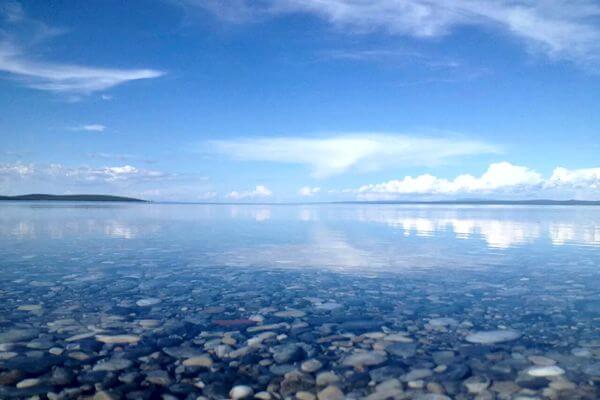

Khovsgol Lake
We will spend a full day exploring the lakeshore and surrounding mountains. For those interested they will have the possibility to go horseback riding, visit reindeer families, go hiking and canoeing (if weather permits). Tsaatan or Dukha, one of the last remaining reindeer herders of the world. Their unique way of life is centred and structured around reindeer and guided by Shamanism, ancestral spiritual practice based on nature worship.
(Ger camp B, L, D)
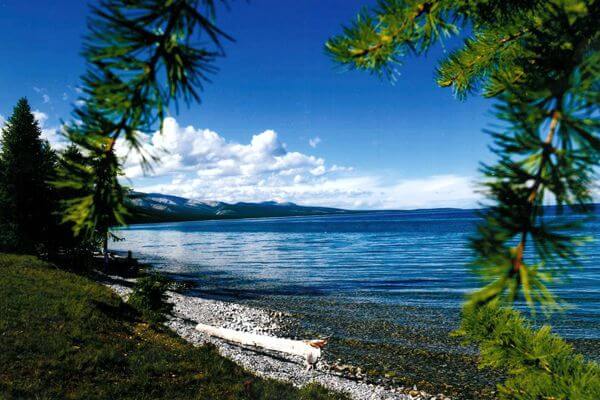

Selenge River
After having enjoyed a full day along the Khovsgol Lake, we will take the road again, south-eastwards to Amarbayasgalant Monastery. This trip will take us two days through the Mongolian grasslands, arriving at Amarbayasgalant Monastery on the 3rd day in the evening.
We will overnight in a family close to the Selenge River. The Selenge is the largest river of Mongolia. The river is formed by the confluence of the Ider river, which rises on the northern slope of the Khangai Mountain Range, and the Delger river. The Selenge river drains into Lake Baikal in Siberia and is 992 kilometres long, of which 593 kilometres flows through Mongolian territory. Large rivers – the Orkhon, Yeroo and Tamir – drain into the Selenge. The annual flow of the Selenge River is a remarkable 9.3 cubic km and it accepts 30.6% of the flow of all rivers in Mongolia. We will spend an evening with nomads. Barbeque cooked over hot stones is on the menu. Engage a friendly chat & listen to their amazing life stories over one or two shots of vodka. Herders make local vodka from fermented milk.
(Tented camp B, L, D)
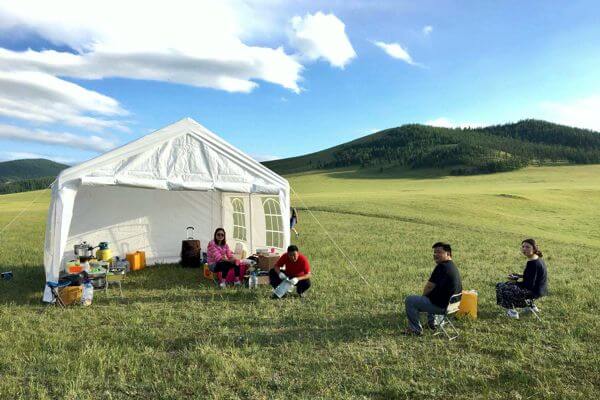

Uran Togoo National Park
About 60km directly west of Bulgan city is the extinct volcano of Uran Uul and nearby Togoo Uul, now part of the 1600 hectare Uran-Togoo Tulga Uul Natural Reserve in the sum (district) of Khutag-Ondor.
Trails to the top of the relatively unimpressive volcano lead up from the west side, which also has some nice camping areas. On the top of the extinct volcano is a crater, 500 to 600 meters wide and 50 meters deep, filled with a small “crater lake” about 20 meters in diameter.
(Ger camp B, L, D)
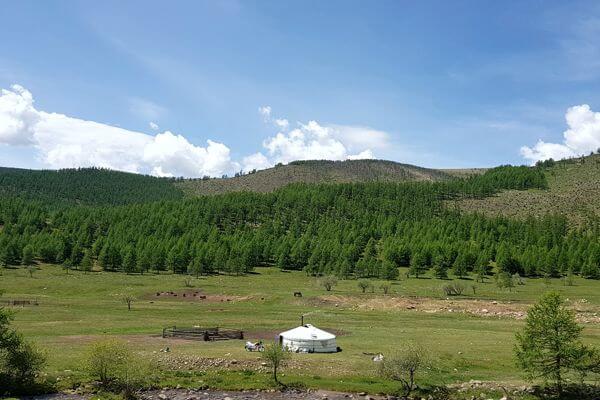

Amarbaysgalant Monastery
After a second day of driving we will finally reach Amarbayasgalant Monastery. The monastery is set in an exquisite valley surrounded by mountains. After Erdene Zuu Monastery, the Amarbayasgalant Monastery is considered as the second most important monastery and the most intact architectural complex of Mongolia. The monastery was built in the 18th century by the Manchu emperor Yongzheng and dedicated to the great Mongolian Buddhist Zanabazar. The beauty, decorations and construction of the monastery have made it one of the most magnificent architectural monuments not only in Mongolia, but in the whole Asia.
(Ger camp B, L, D)
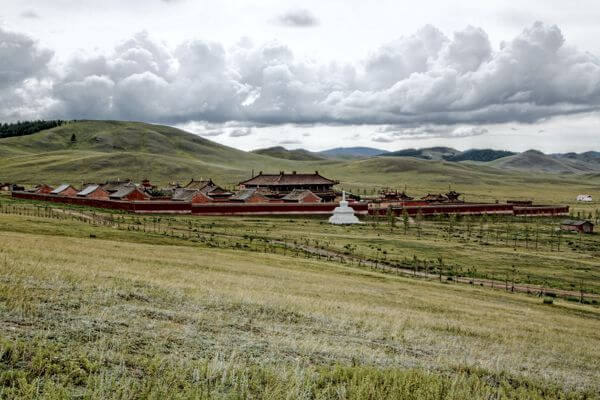

Drive to Ulaanbaatar
After approximately 6 hours’ drive, we will return to Ulaanbaatar. The afternoon is free to explore and catch up on the world news, check emails and become accustomed to city life once again. You may enjoy the free afternoon to catch up all the places you haven’t visited yet. You might check as well the beautiful cultural show enjoy the colourful and rhythmic Mongolian dance, throat singing and admire & contortionists.
(B, L)
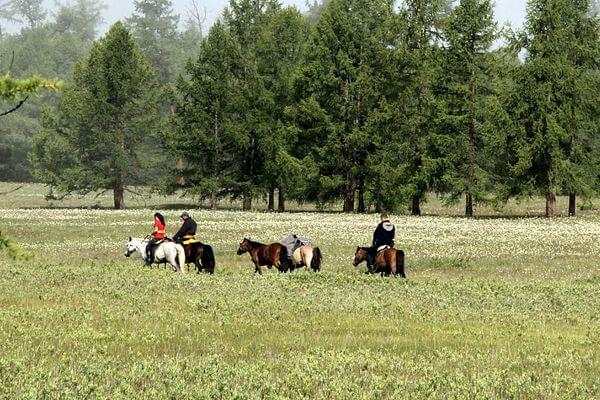
Option 1: Family stay in Central Mongolia and Horse Riding
The family lives close to a river in the wide open Mongolian steps. We will experience the warm hospitality offered by the Mongolian families. For dinner we will be offered a typical Mongolian barbeque that will be prepared by nomads. Those who want will have the opportunity to try the “airag” or fermented horse milk. Our guide – translator will help us to forge contact with the local population. Those interested will have the opportunity to do horse riding.
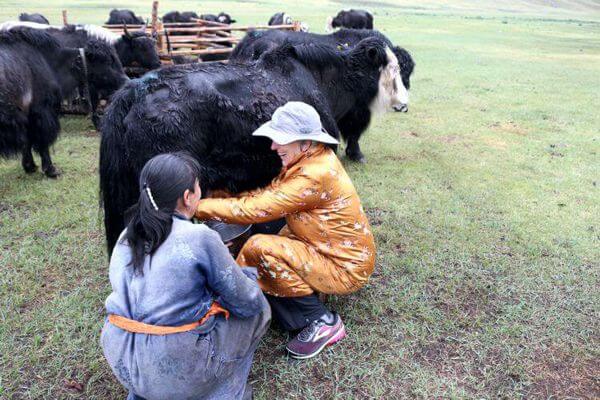
Option 2: Family stay in Gobi Desert and Camel Riding
The family lives in the Gobi Desert. We will experience the warm hospitality offered by the Mongolian families. For dinner we will be offered a typical Mongolian meal that will be prepared by nomads. Those who want will have the opportunity to try the “camel airag” or fermented camel milk. Our guide – translator will help us to forge contact with the local population.
Those interested will have the opportunity to do camel riding.
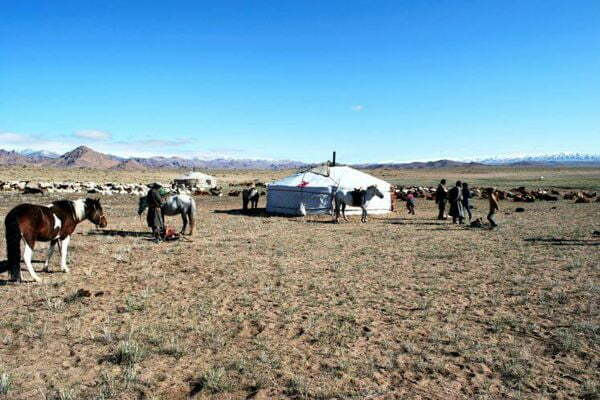
FIXED DEPARTURE
June 2024
- 23 June - 10 July
August 2024
- 14 August - 31 August
INCLUDED
- Land transportation
- 15 nights Ger camp stay
- 2 nights tented camp stay
- Meals 17B, 18L, 17D
- Tour guide
- Camping and kitchen equipment
- National park, museum, monastery entrance fee
NOT INCLUDED
- Hotel in Ulaanbaatar
- City touring
-
Medical, trip insurance and
evacuation costs - Alcoholic and soft drinks
